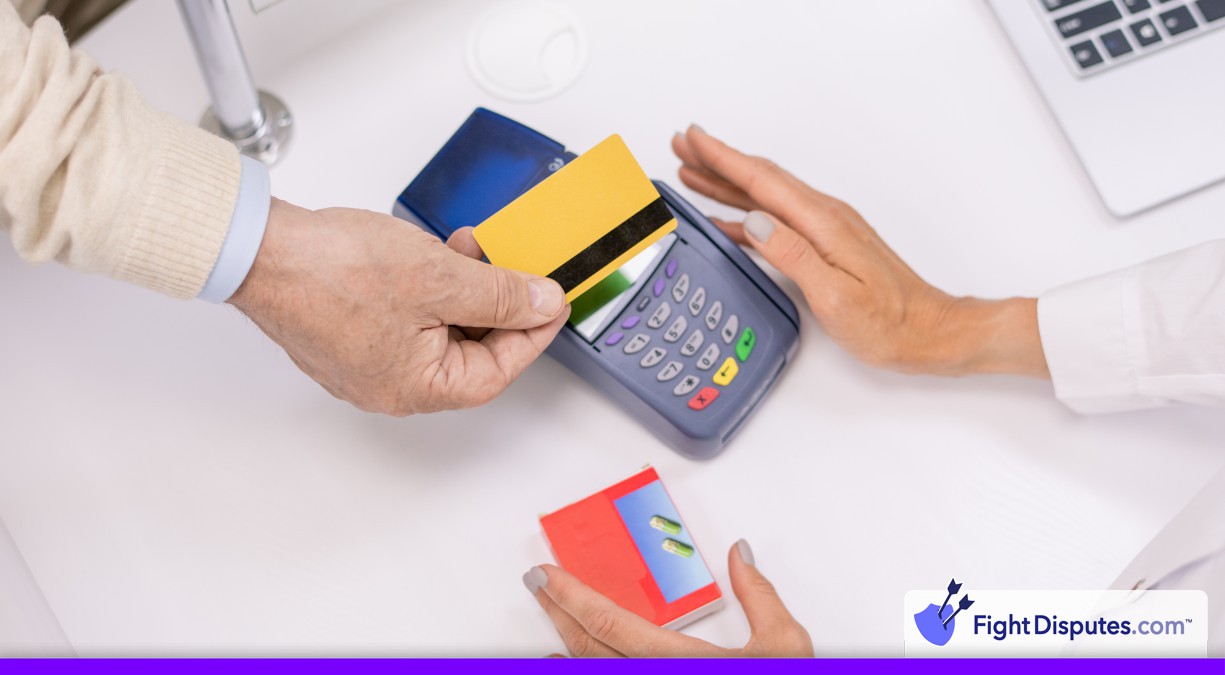12.7: Invalid Data
Visa chargeback code 12.7 shows up when something goes wrong with your transaction data – maybe it’s corrupted, missing important facts or basically invalid in a way that stops the payment system from processing it.
What makes this particular chargeback code so annoying is that most of these problems actually come from technical glitches and data processing errors that you can head off with better systems and processes. The root causes are usually pretty basic system misconfigurations that went unseen, manual entry errors that slipped through the cracks or payment setups that haven’t been touched or updated in months (sometimes even years). The actual damage happens when merchants miss the early warning signs that something’s not right. Once these problems start piling up they build on one another and costs add up fast. Your chargeback ratios start creeping higher than they should, you might wind up flagged for Visa’s review programs and you’re spending a lot of hours and extra money fighting disputes that could have been avoided in the first place.
Data validation errors are something that merchants face all of the time and these problems pop up in some fairly predictable patterns across different types of business operations.
How It Works
When you submit a transaction to Visa, your payment system actually sends dozens of data fields along with the basic card number and amount – and every field needs to match Visa’s exact format requirements. A merchant category code that’s just 1 digit off or an expiration date in the wrong format can trigger problems right away.

The issuer runs an automated system that closely scans each transaction for these mismatches and this happens well before any human reviewer gets to see it – it works quite a bit like one of the strict spell-checkers (the kind that actually won’t let you send your document out if it finds even a single typo). Once the system catches any invalid data in your submission, it automatically kicks the entire transaction over to a review queue where a person is going to need to take a manual look at everything. It’s where the situation starts to get expensive for merchants. The issuer will start a chargeback to recover the funds because those data errors make the transaction look like it might not be legitimate. Your valid sale has just become a financial headache that’s going to cost you money and time to sort out.
Manual entry is where most of these errors actually start to happen. Your staff has to type in card information over the phone and it just takes 1 wrong keystroke to ruin the entire transaction. Payment gateways that haven’t been updated in a while can also start formatting data in ways that Visa won’t accept anymore. Even something as basic as your system clock being off by just a few minutes can make those date fields look invalid to their processing systems.
What makes chargebacks frustrating for business owners is the bad timing of when they actually land in your account. These disputes don’t appear immediately – they can show up days, weeks or sometimes even months after the customer originally placed their order with you. By the time you get hit with that chargeback notification, there’s a pretty strong chance that you’ve forgotten about that particular sale. It’s almost like being accused of something you can barely remember doing and it makes it very hard to pull together the right paperwork or remember what may have gone wrong with that transaction.
How it Affects Chargeback Prevention
Thankfully, most 12.7 chargebacks can be prevented, and good news if you’ve been taking care of them day in and day out – this chargeback usually happens because of technical glitches that you can fix yourself. Your payment system accidentally sends the wrong information to Visa in most cases and their automated system flags it right away. No actual person is involved in that choice – it’s all automatic, with zero human review.
Each 12.7 chargeback that hits your account is a penalty fee for something that went wrong on your side. The issue usually comes from transaction data that didn’t line up the way it should have, or maybe a bit of information got mixed up somewhere between your payment processor and Visa’s network. What sets these chargebacks apart from the usual disputes you might manage is that they have nothing to do with upset customers or card issuers weighing in on if a purchase was real. They’re just automatic reactions triggered by data errors that your own system made.
Fixing these technical problems does quite a bit more for your business than just saving you money on single chargeback fees. Without these preventable disputes, your total chargeback ratio starts looking much healthier. A better ratio helps you stay well outside Visa’s watch programs and the associated penalties that go with them. Plus your team gets back the hours they would have spent fighting chargebacks they probably weren’t going to win anyway.
Your customers will have a much better experience too and it’s what this whole effort is all about. When payments go through the first time, nobody has to manage declined cards, confusing charges that show up later, or payments stuck in limbo. Smooth and reliable processing makes them feel confident about buying from you and confident customers keep coming back.
Most merchants have no clue what technical chargebacks are actually costing them. As you start adding up the actual chargeback fees, the merchandise you lose and the time and energy your team spends taking care of the paperwork that comes with each dispute, the numbers add up fast. The upside is that by implementing better data-validation processes you’ll usually see that cash come back within a few months – sometimes even sooner.
Example Scenarios
Phone orders usually become another big pain point for most merchants and 9 times out of 10 it’s just basic human error that didn’t need to happen in the first place. A staff member might take an order over the phone and keys in the card number wrong by a single digit. Or maybe they enter an old expiration date because the customer forgot to mention that they received a new card last month. Those little mistakes add up quickly and each error can turn into a chargeback that costs you the original sale along with the extra fees.
Technical problems can cause some of the most unexpected issues. Your payment gateway provider releases a standard software update overnight and suddenly the field mappings in your system have changed. The CVV code that used to go in field A now needs to be entered in field B. But nobody on your team sees the change. Days later the chargebacks start rolling in and by that point you’ve already processed hundreds of transactions incorrectly.
The actual fix only takes about 5 minutes when you know what the problem is. But tracking down the root cause and taking care of the chargebacks can take weeks to sort out.
Requirements and Timeframes
When Visa hits you with a 12.7 chargeback, the countdown timer starts ticking right away. You have just 30 days to respond and contest their dispute. Miss that deadline and you’re done – it doesn’t matter if you have proof that the transaction was legitimate.
The cardholder gets a much longer timeline. That can be frustrating. They have a full 120 days from the transaction date to file their dispute against you. You might suddenly see a chargeback show up for a sale you made 4 months ago and that’s why you need to keep careful and complete records for your business.
Once Visa gives you that 30-day window to respond, every day counts and you should start to collect your evidence as soon as you can. The best place to start is with your transaction records – these will form the foundation of your case. You should get any system logs that show what information you sent to Visa during the original transaction. You should also have any emails or messages that you exchanged with the customer about the order because those conversations can be extremely helpful to put your response together.
Visa can be very picky about even the smallest data mistakes and they’ll reject transactions fast. Sometimes the problem is as basic as having the wrong MCC code for what your business actually does. Other times you might have accidentally entered the wrong country or state code as you were setting everything up. Another common issue is the transaction type indicator – the code that tells Visa if the customer bought online or at your brick-and-mortar location.
Payment errors like this usually appear when something about your business changes. Maybe you’ve moved your store to a new location or maybe you’ve made large changes to your business model – either way you need to update your merchant account right away. The same problem can happen after software or system updates that interfere with the way your transaction data reaches Visa. Your merchant profile should always match the way your business looks and it’s well worth double-checking that your payment system sends the correct codes with every transaction.
Frequently Asked Questions
How can merchants prevent Invalid Data chargebacks?
The best way to avoid these chargebacks is to catch the errors before they turn into expensive problems. Set up your payment system to validate the data automatically when a customer types it in and your checkout page flags incorrect card numbers immediately instead of letting bad data slip through.
Payment system maintenance is a job that deserves steady attention from business owners. Most merchants discover their configuration problems the hard way - that's right when chargebacks start coming in and create problems.
Team training on payment processing might not be the most fun part of your day. But it still matters for keeping your transactions safe. Even the most advanced technology won't save you if your staff members skip the built-in safety measures that are there for a reason. Everyone who works with payments needs to know to double-check card information before processing anything. Verification tools like AVS and CVV checks need to be part of their standard workflow for each transaction that comes through.
Every chargeback costs you the original transaction amount, the processing fees and the hours you'll spend fighting the dispute.
What evidence do I need to contest a 12.7 chargeback?
Fighting chargebacks can be pretty easy if the evidence works in your favor. Your best strategy is to prove that every bit of the transaction data you sent to your payment processor was accurate. The first thing you should do is collect your transaction logs - these need to show the exact card info you transmitted when the sale went through. Screenshots of the valid card info you entered can help when they're obvious for the processor to verify. The main factor in winning these disputes is if your authorization records match with the transaction amount and the date that the customer is questioning.
It doesn't make much sense to spend all that time and energy fighting a dispute if you already know that the outcome won't be in your favor. Code 12.7 disputes are tough to manage mainly because you have to show that the bank made the mistake instead of your business. Right away this puts you at a disadvantage. Your best defense is keeping complete records of each transaction that runs through your account. You need to document everything. When a dispute comes up and you don't have the right paperwork to back up your case you're dependent on whatever the bank decides.
There's one last important point that can decide your appeal's success - you have just 30 days to submit your evidence so time is very limited. Your response needs to address head-on whatever issue they're saying is wrong with your application. If they claim your expiration date is off you need to prove them wrong with strong documentation that plainly shows the date. Whatever you do don't put together random papers and expect results - I usually see this mistake and it almost never goes well. Choose your supporting materials carefully and make sure that each document plays a role in building your argument.
Why do Invalid Data chargebacks happen even with automated systems?
Automated payment systems have a tendency to break down right when you least expect it and the worst part is that you might not even see that anything went wrong until it's much too late. Software updates are one of the biggest culprits in this mess and I see this type of issue happen all of the time. Your payment processing software might suddenly run an automatic update at 2 AM on a Tuesday. That update could change how merchant category codes get assigned to your transactions. From that point on each transaction is sending the wrong category codes directly to Visa's system and you'll stay in the dark about the whole situation until those chargebacks start landing in your account weeks later.
Payment gateways can be just as unreliable about keeping their systems stable. These providers will randomly choose to upgrade their systems and change something as basic as how dates get formatted in the API - usually with very little advance warning. Your integration might be running just fine on the surface and each transaction still processes without any visible problems. What you might not see is that each payment now has invalid date information attached to it.
Almost every merchant falls into this same pattern once they finally get their payment systems configured and working. They'll spend weeks setting everything up just right and then they treat it like it's maintenance-free from that point forward. The problem is that the connections between their systems can deteriorate slowly over time and sometimes the data flowing between them gets scrambled or corrupted - all without any obvious warning signs. Say your cash register starts sending dollar amounts in a different format after a small software update and since customers are still able to pay and transactions still appear to go through, you might never see that anything has changed at all.
The frustrating part about payment system failures is how sneaky they can be. You're in the dark about any issue until Visa starts declining your payments or when frustrated customers start filing disputes. Thankfully standard testing helps you find most of these problems before they grow into actual trouble.
How are Invalid Data chargebacks different from other processing mistakes?
Data accuracy is a very tedious back-office topic that business owners like to delegate to another person and then stop thinking about. Most merchants just cruise along day after day without realizing that a data problem is slowly brewing in the background. Everything seems to be working just fine until one random Tuesday morning when they log into their merchant account and discover a chargeback sitting there that makes no sense at all.
What makes this situation even more frustrating is that most of these disputes are preventable if you have the right systems and processes working. Data chargebacks are pretty strange and unusual compared to the normal customer complaints and problems that usually pop up. Usually your customers don't even bother to call and complain about anything and from their perspective the entire transaction probably went just as it was supposed to. What's actually going on is that some automated system lower down in the payment processing chain is having difficulty with the way your transaction information was packaged and transmitted. You're not taking care of a normal customer service problem here - it's more of a technical glitch that happens behind the scenes and makes it extra hard to resolve because the usual customer service methods that normally work just aren't going to be helpful in this situation.
The news about data chargebacks is that when you know what causes them in the first place they turn out to be much easier to stop than most other types of disputes. Easy practices like scheduled checks on your systems, staff training on the warning signs and updated payment software can remove most of these problems before they ever grow into something you have to manage. The main trick is to make these practices a normal part of how you run your business each day instead of trying to fix problems after a chargeback has already landed on your desk.
If chargebacks continue to show up and cause problems for your business or maybe you're a business owner who wants to double-check that all your payment processing is actually working the way it should, an expert who understands these systems could wind up saving you time and money down the line.
 Call (844) NO-DISPUTES
Call (844) NO-DISPUTES



